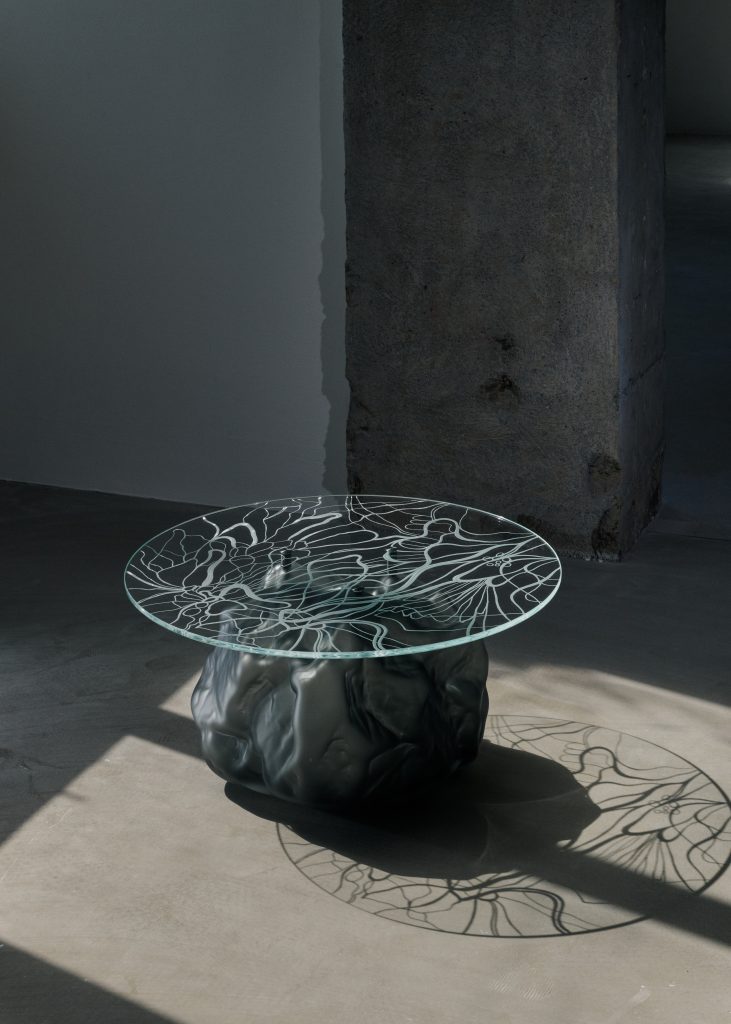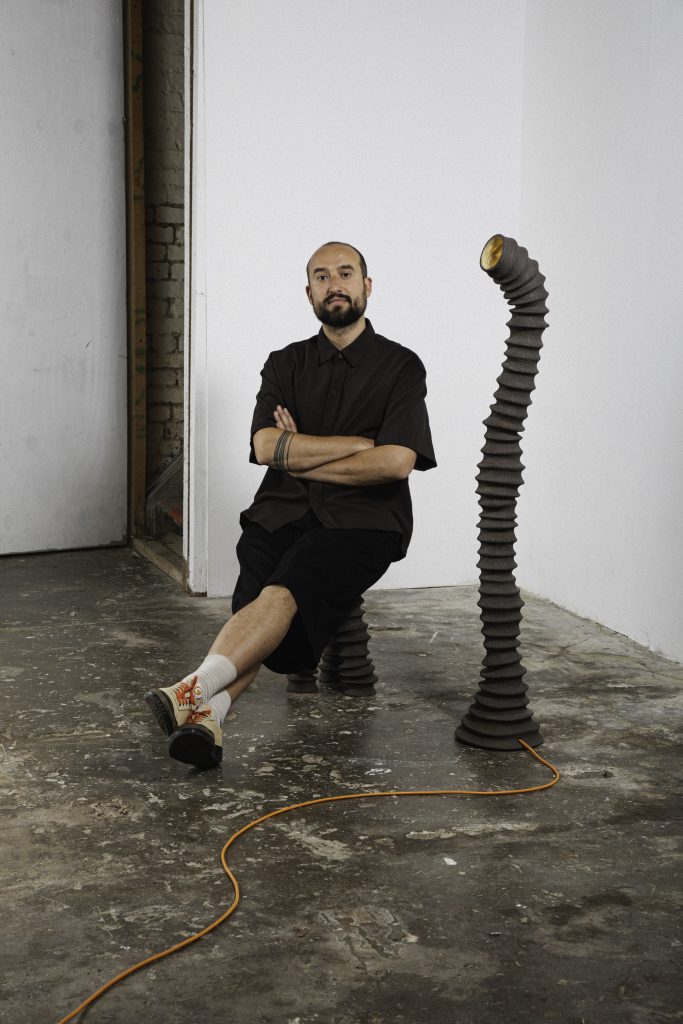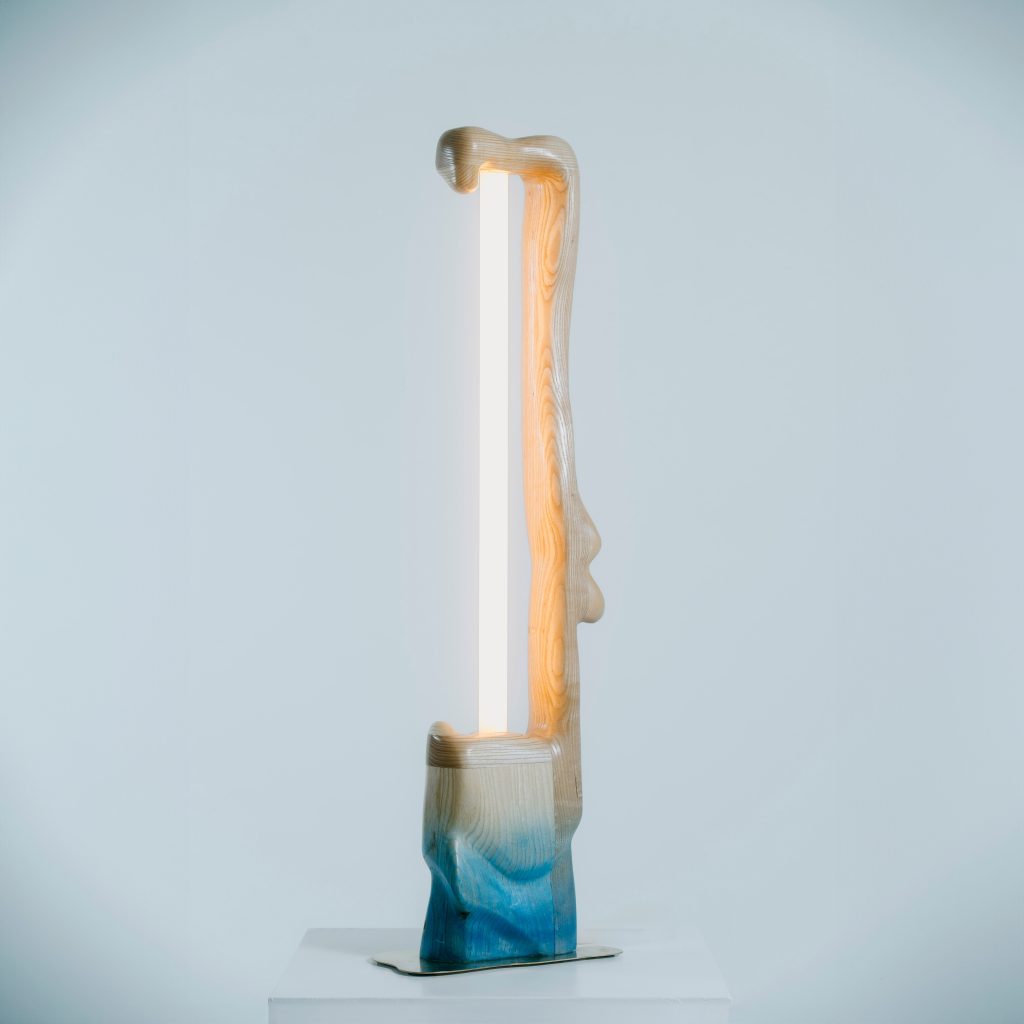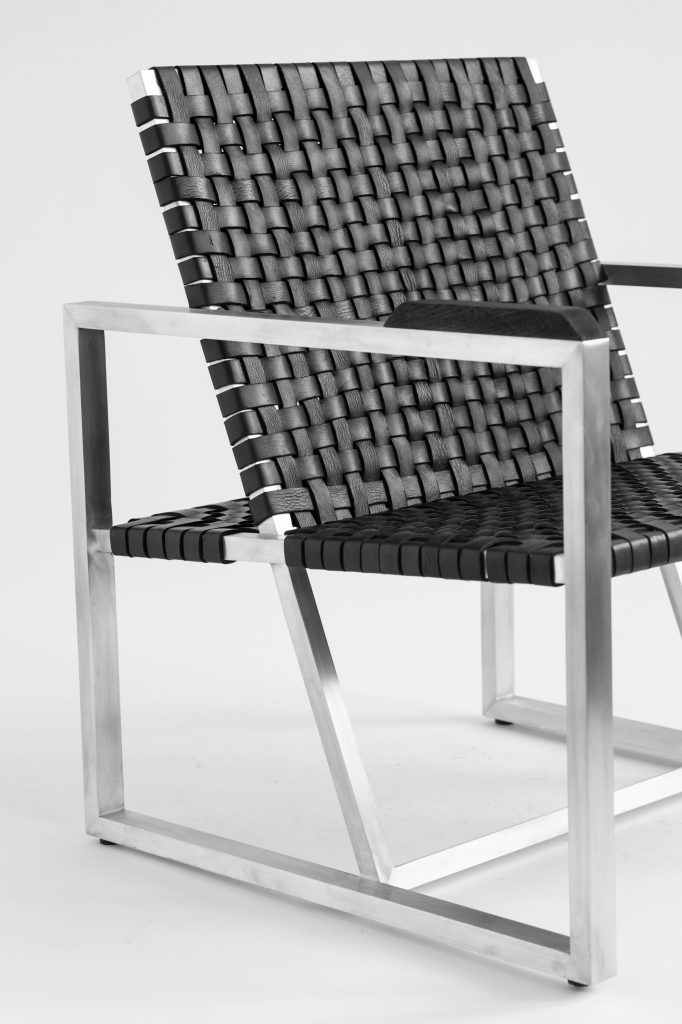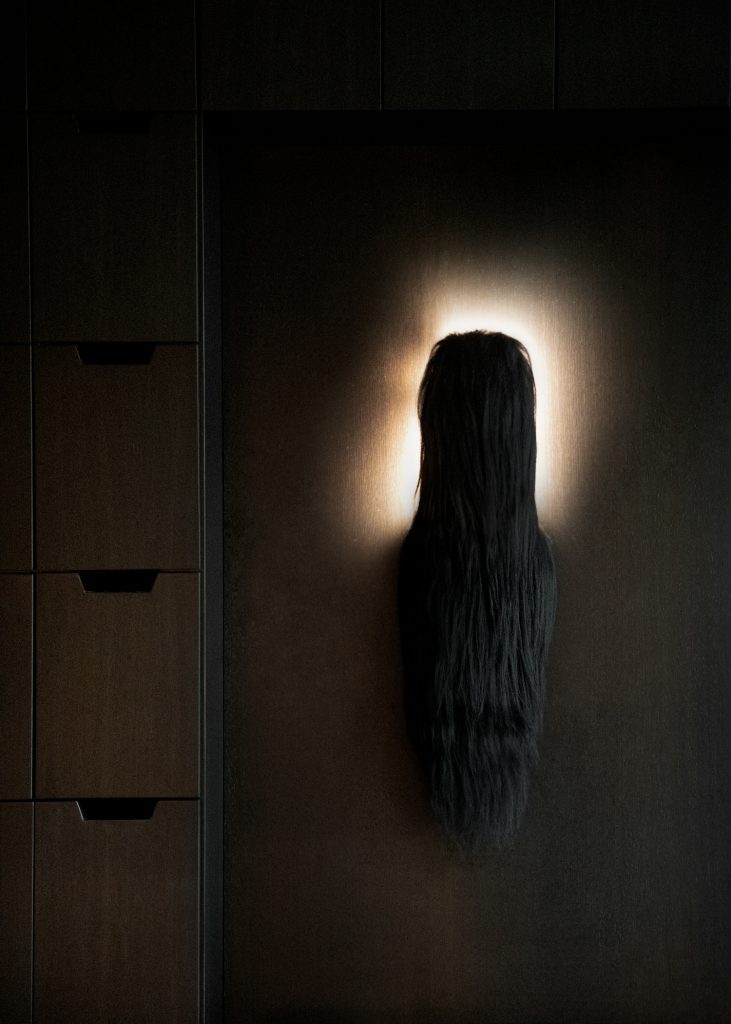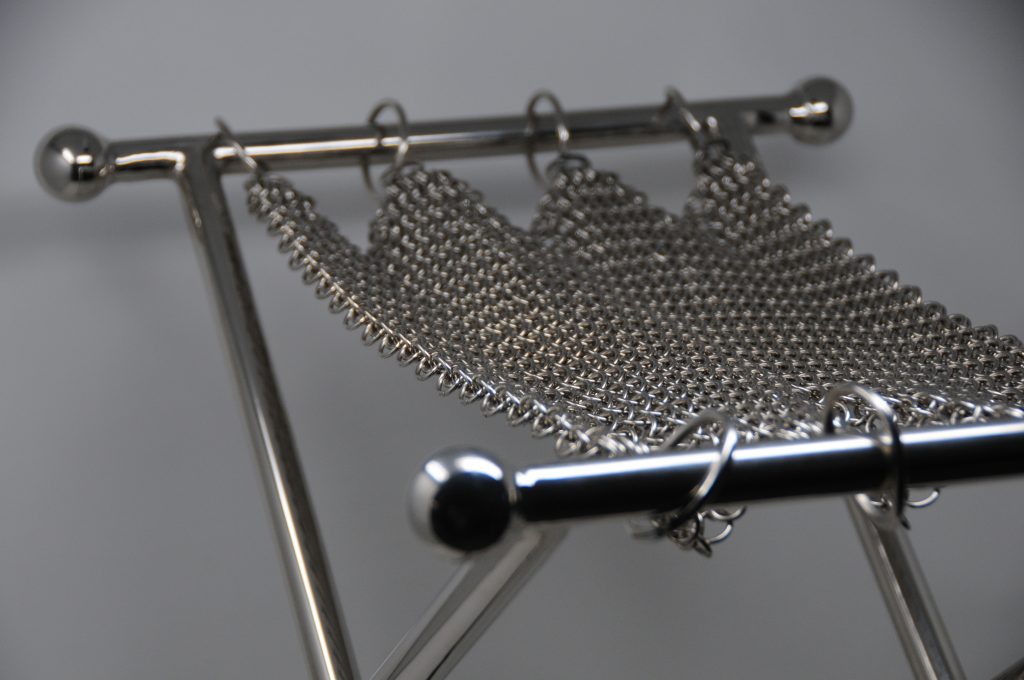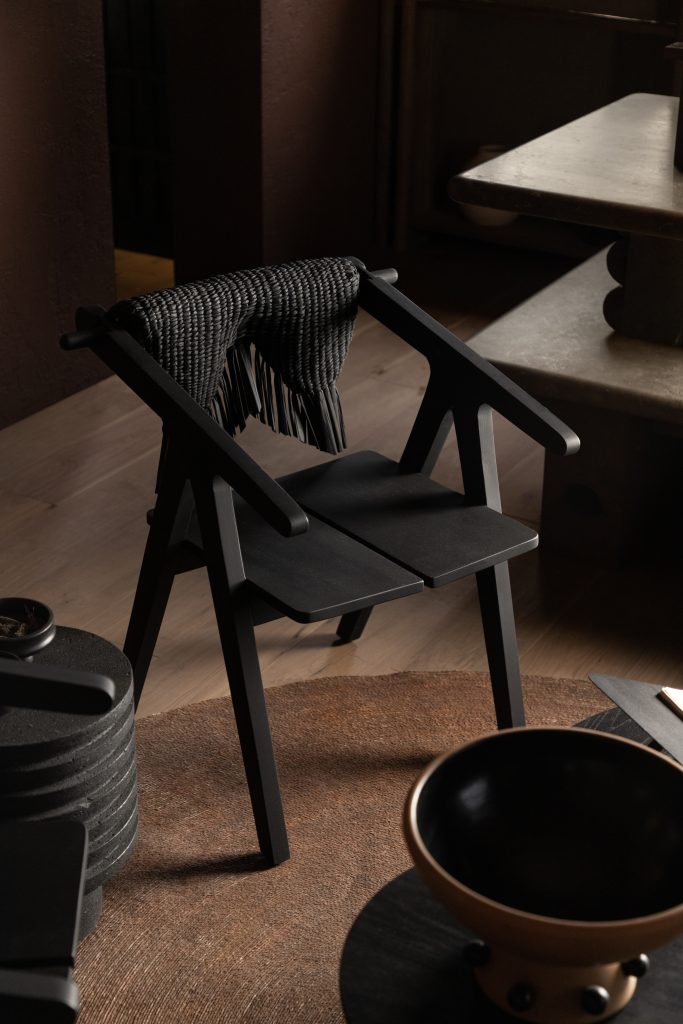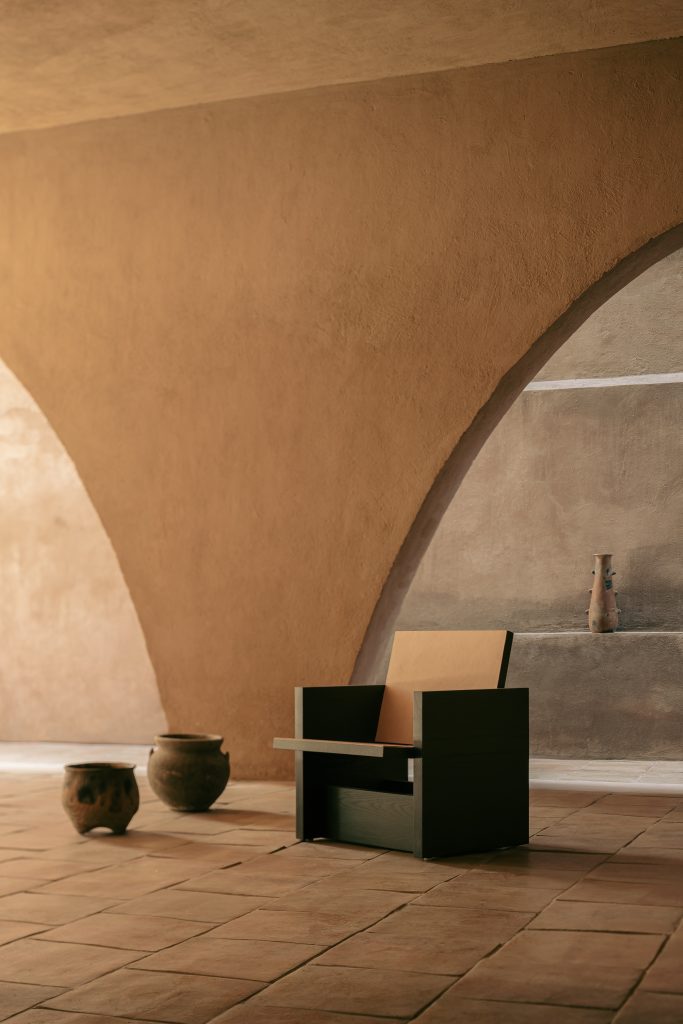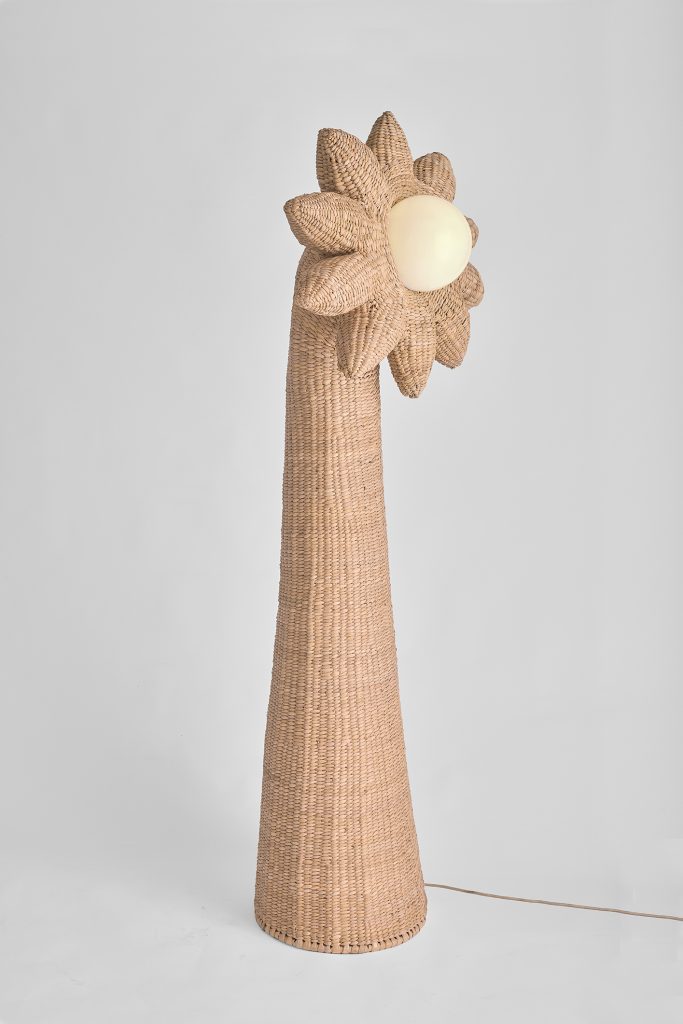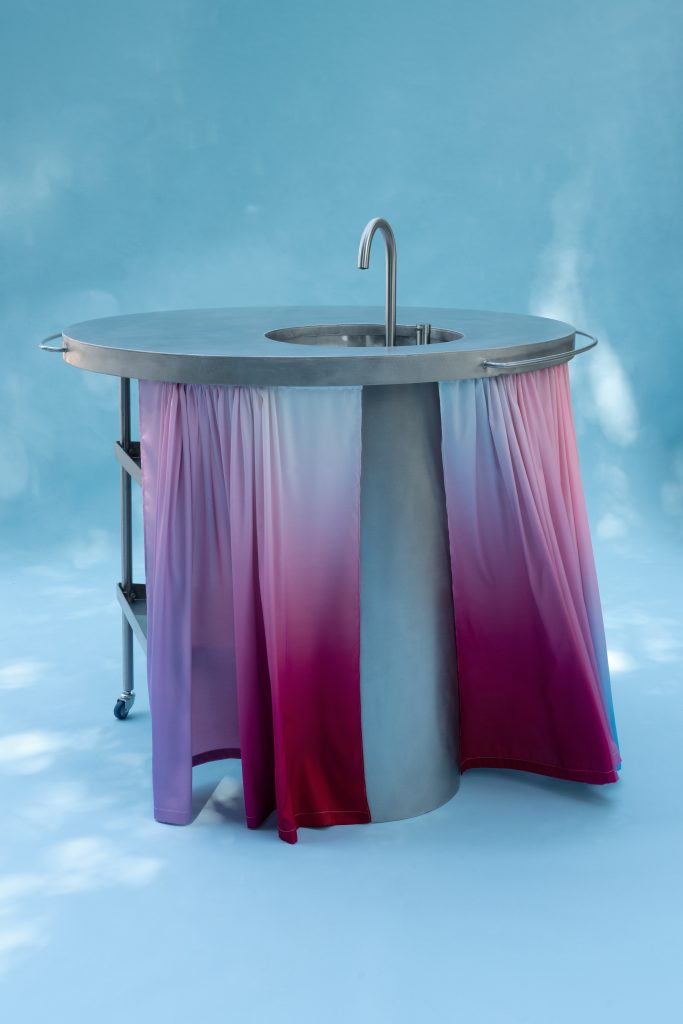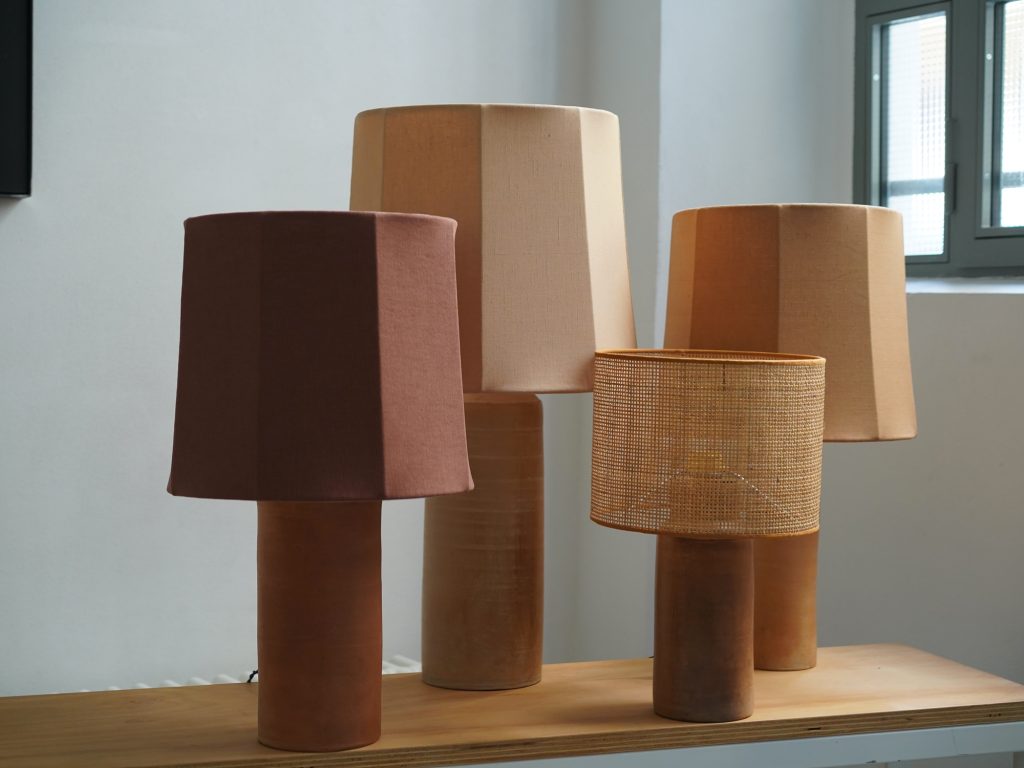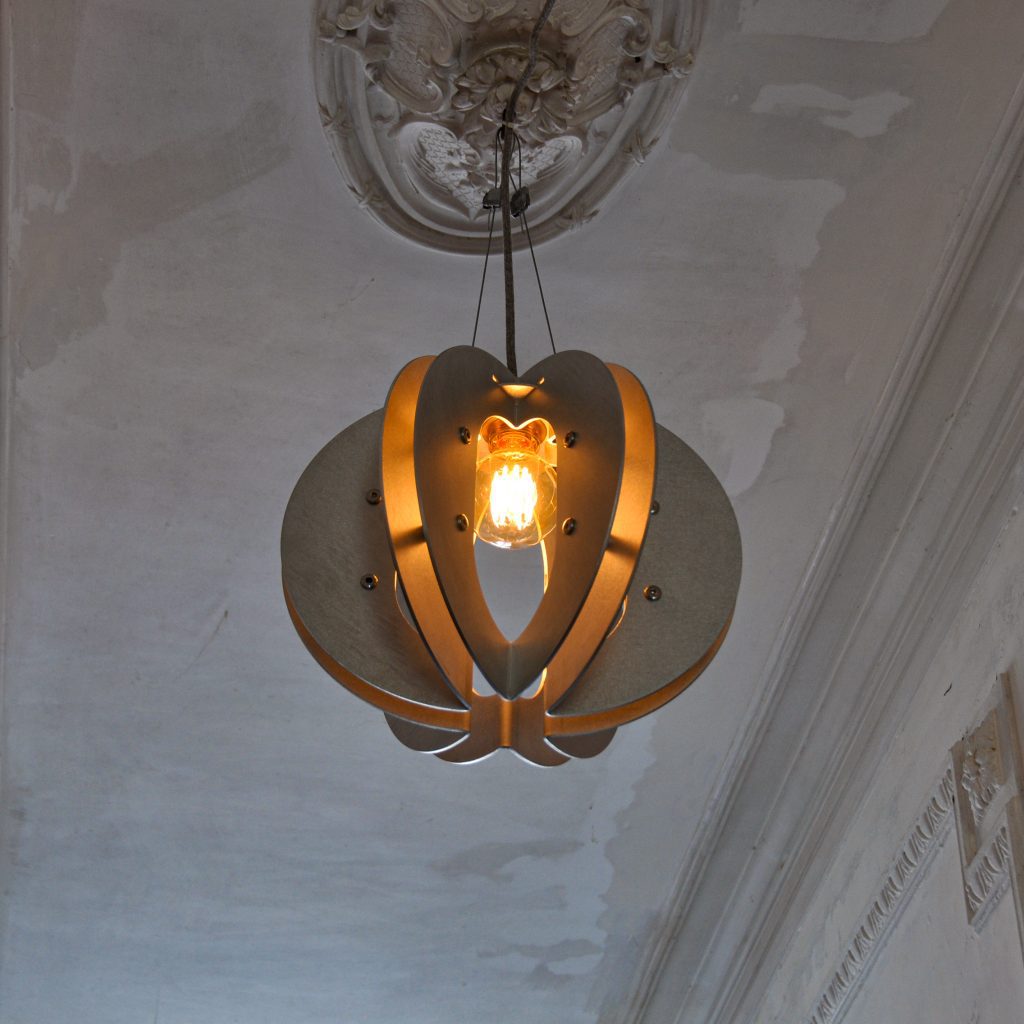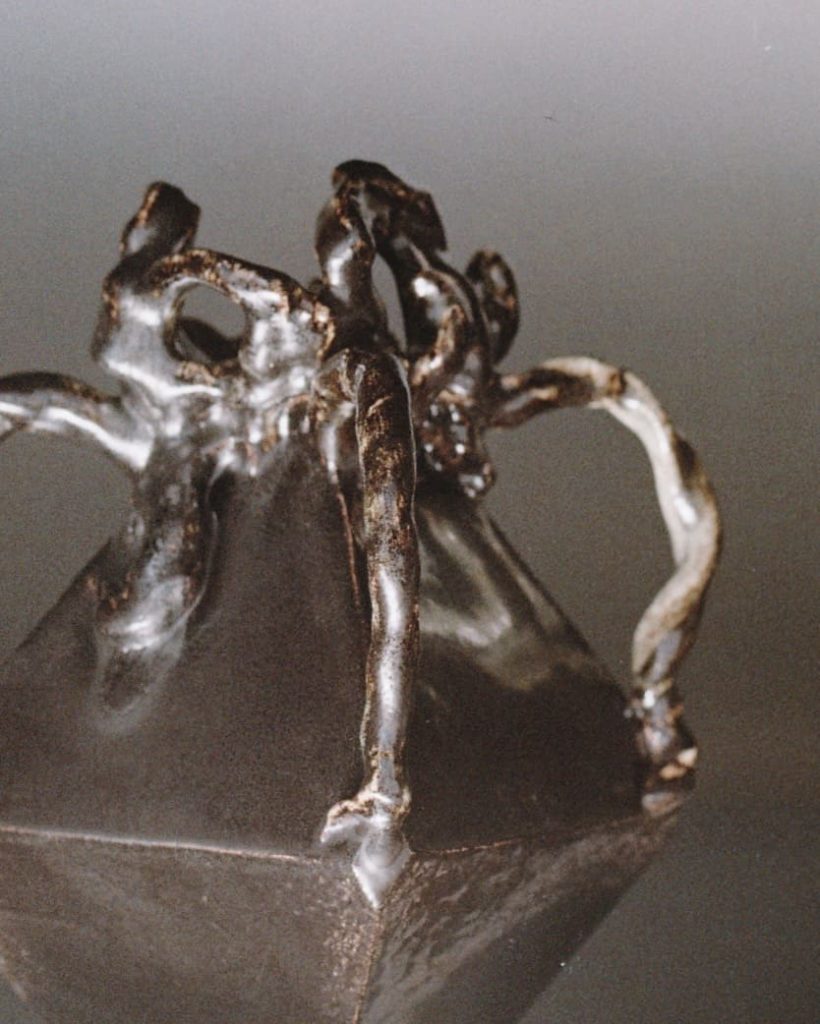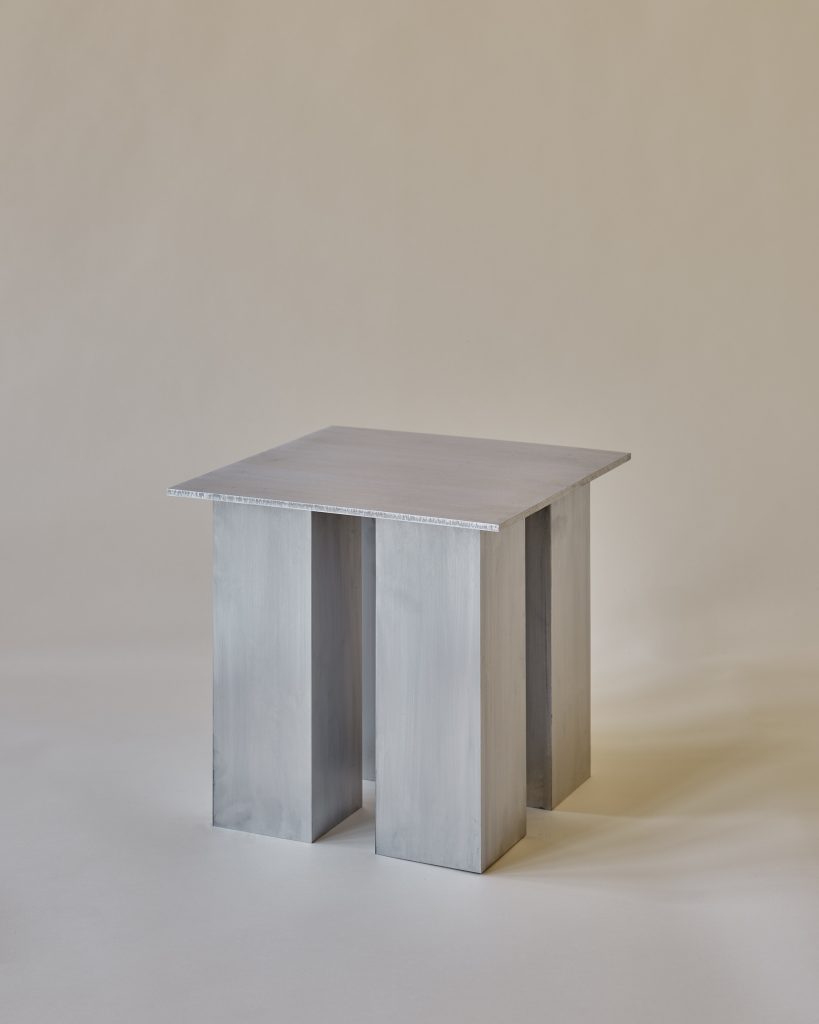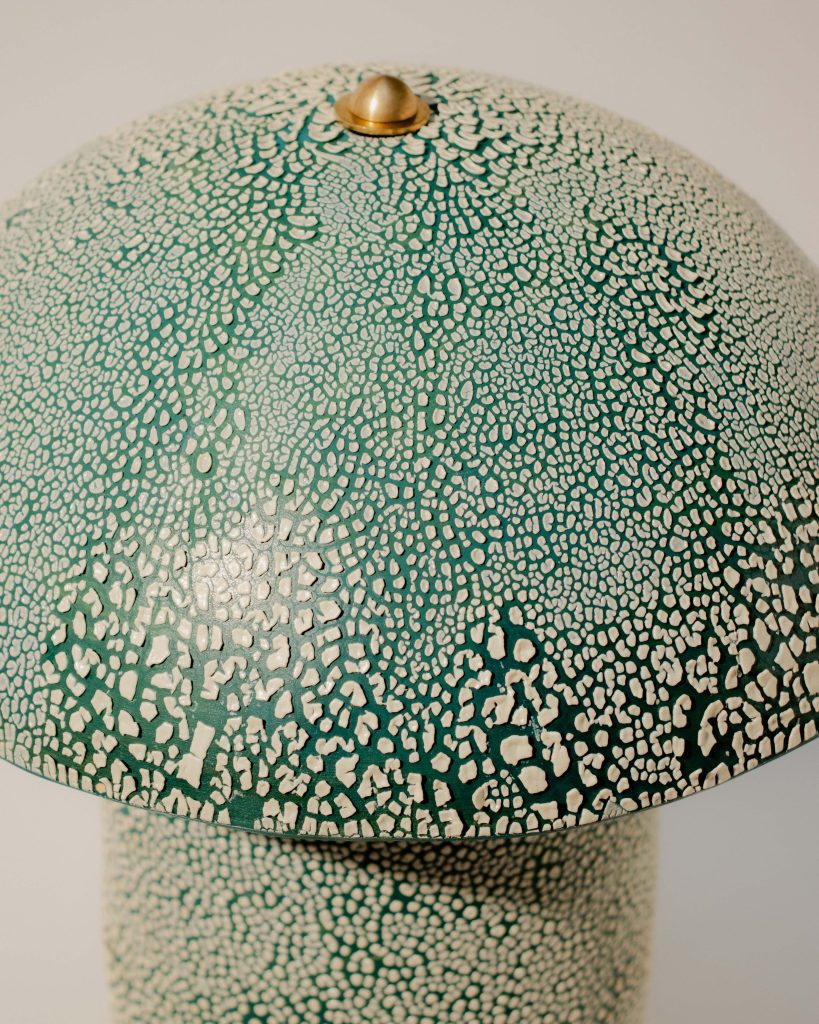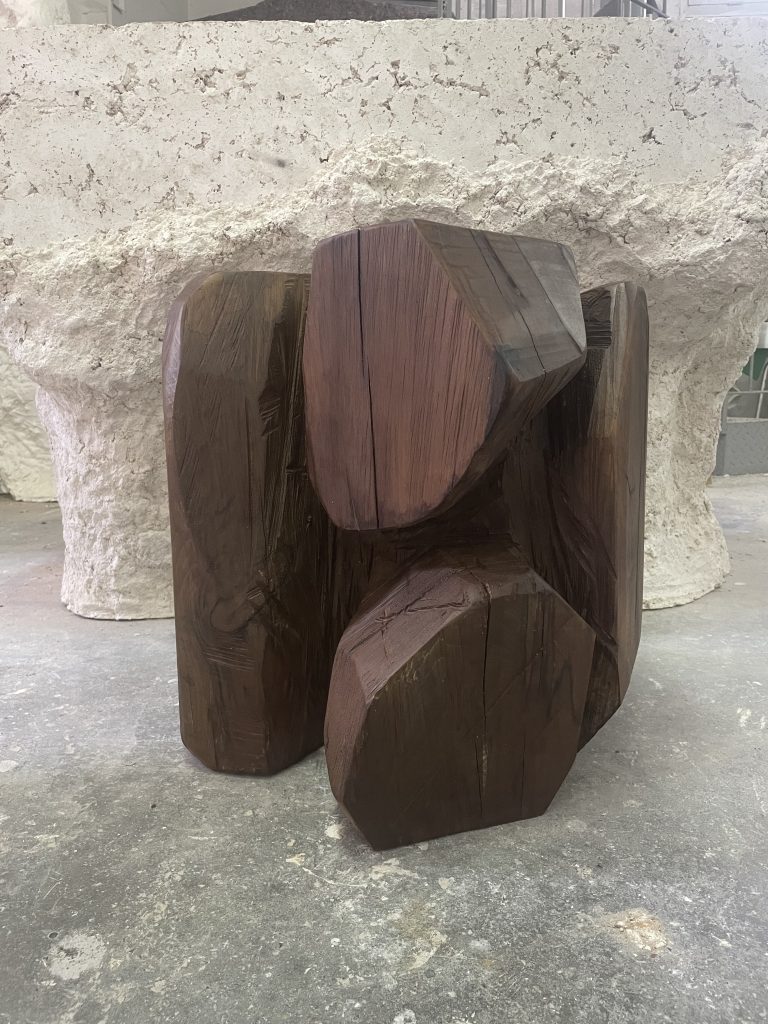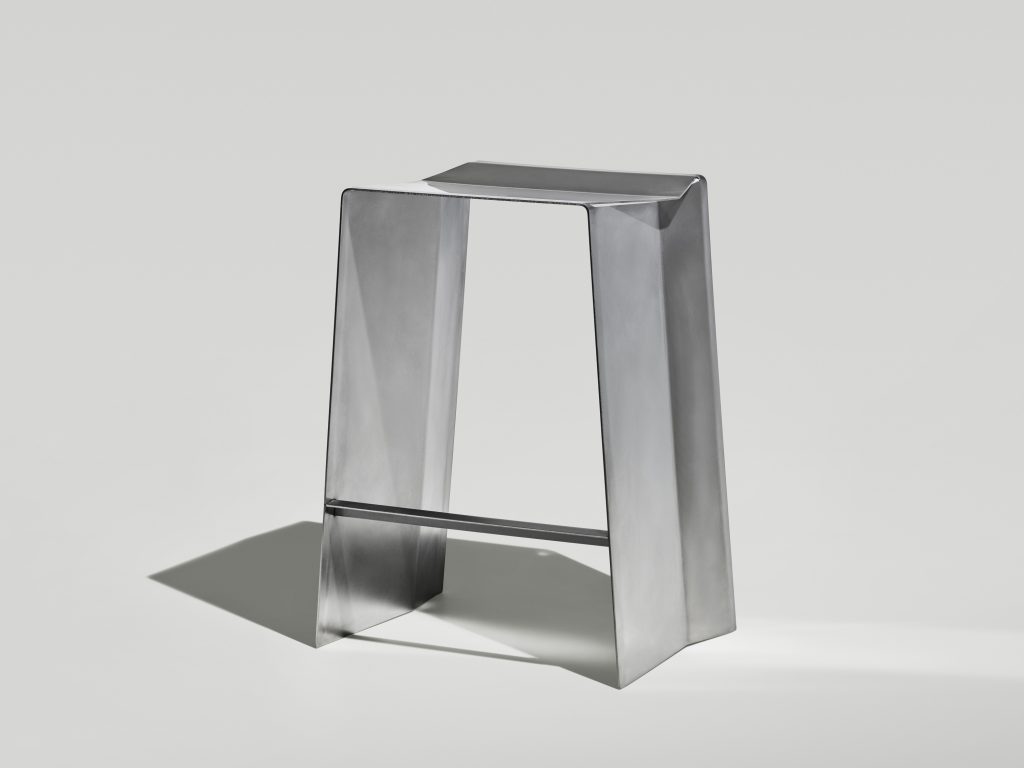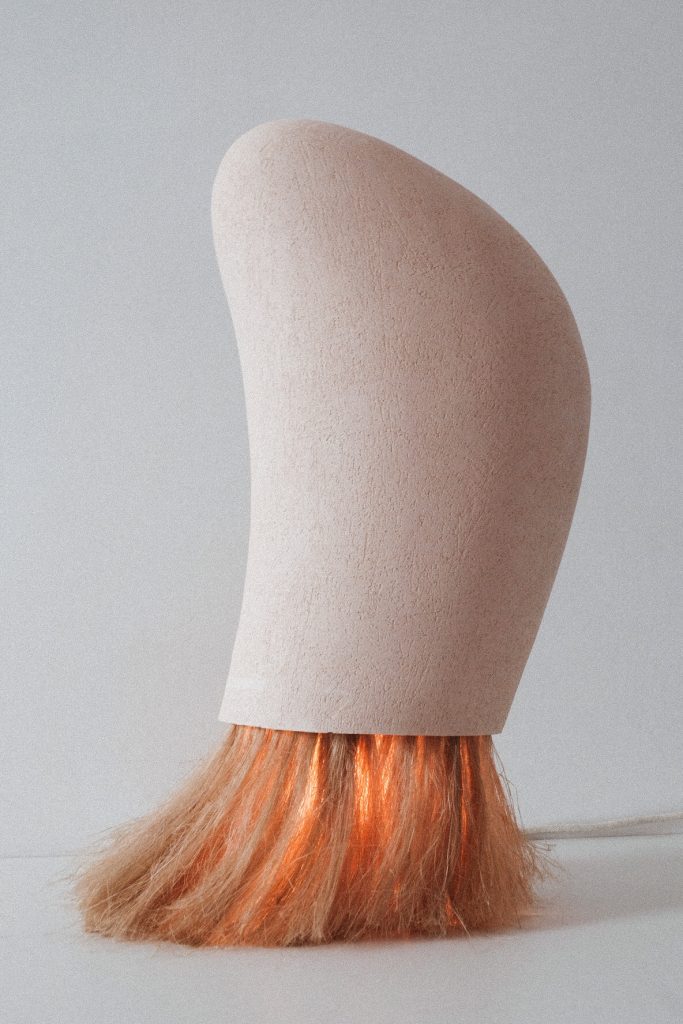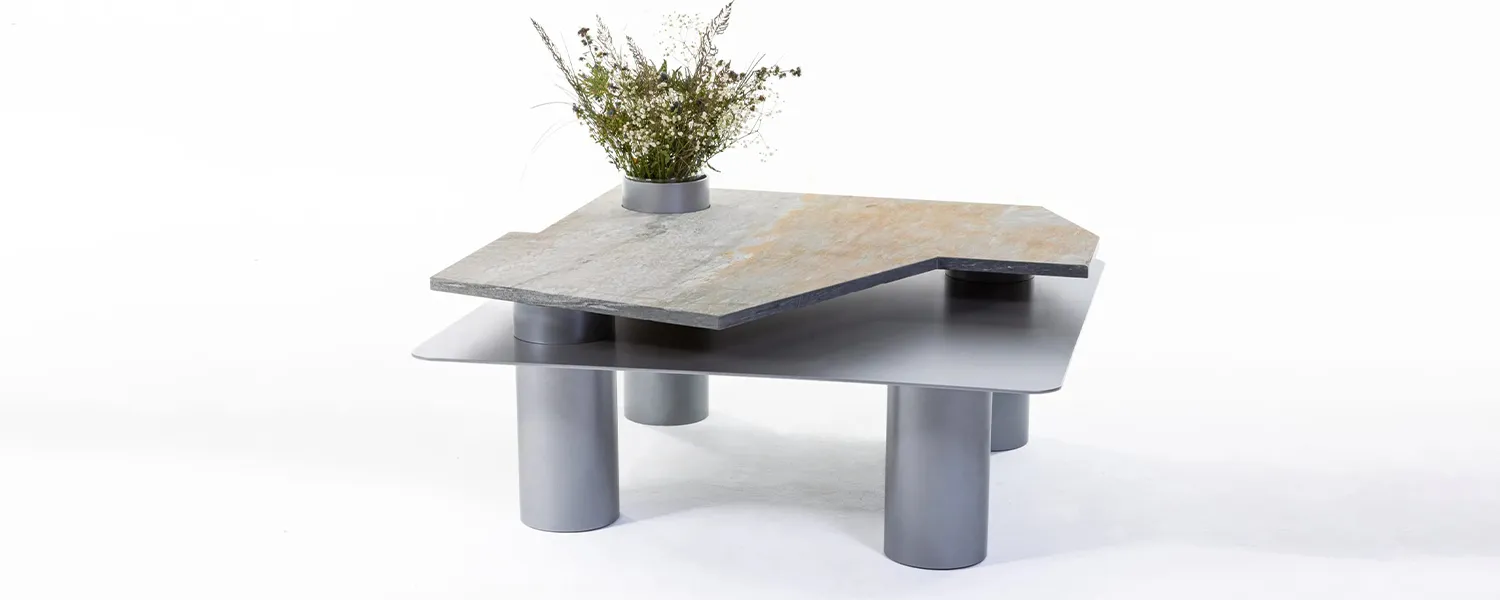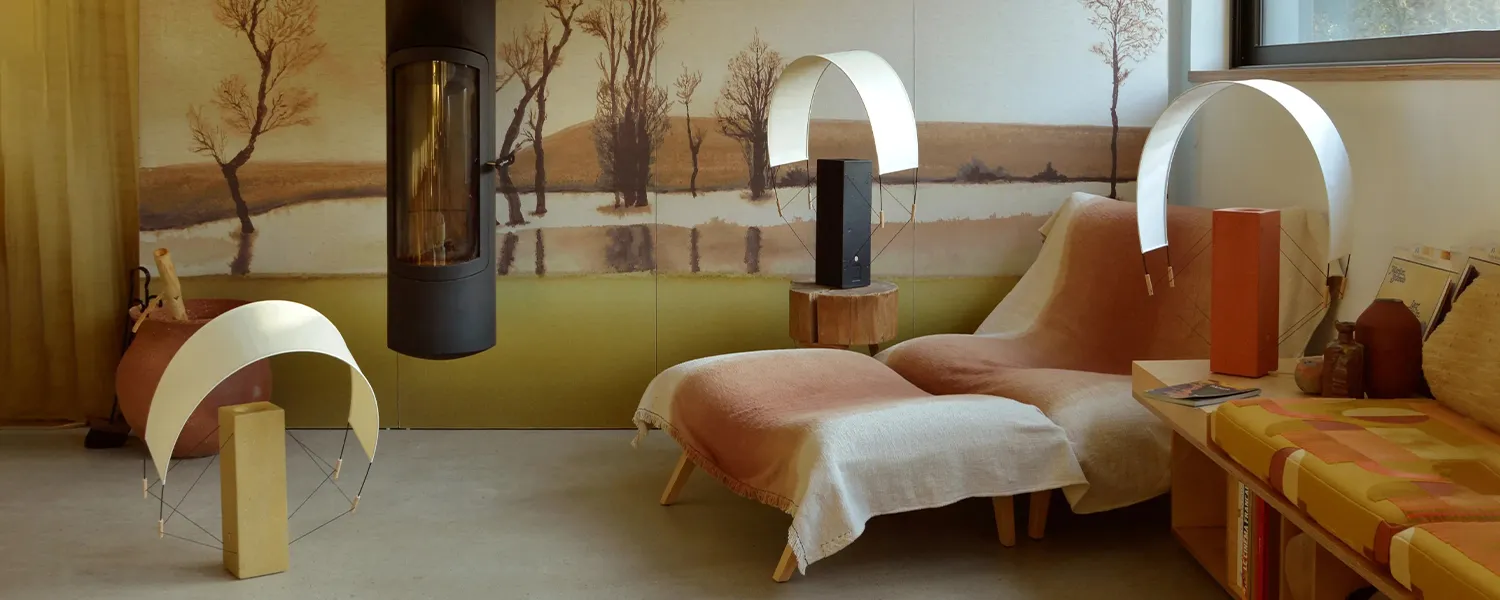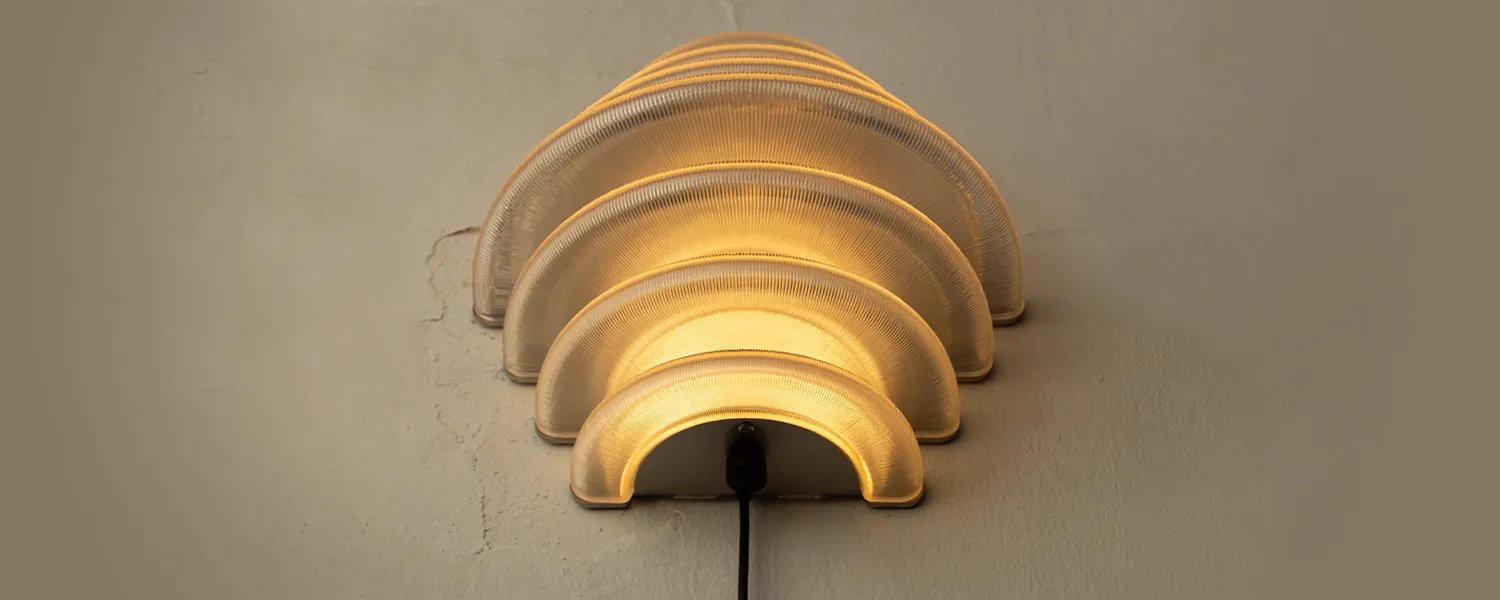
Wrapping Up 2024: A Remarkable Year Of Contrasts In Contemporary Design
As 2024 comes to a close, we reflect on a year that has been nothing short of transformative for the world of collectible design. In its eighth consecutive year, Adorno has continued to champion the artistry, ingenuity, and global resonance of independent makers. This year, we’ve witnessed extraordinary talent push boundaries, reimagine materials, and craft stories through their creations—objects reflecting culture, heritage, and innovation.
From the year’s most coveted pieces to the studios shaping the future of design, 2024 was a convergence of aesthetic trends, environmental consciousness, and technological advancement. These highlights showcase the evolving tastes of design lovers and the deep connections between craft, community, and creativity. Join us as we celebrate the moments and makers that defined 2024 and look forward to the exciting possibilities 2025 has in store.
Instagram Favorites: Eye-Catching Statements With A Story To Tell
2024 was a year where collectible design captivated a diverse global audience, elevating objects from functional forms into cultural artifacts. The most viewed pieces on Instagram epitomized this transformation, resonating with viewers through their bold experimentation, nuanced storytelling, and seamless blend of tradition with contemporary relevance. When design reaches such broad exposure, it fulfills a critical role beyond its appearance, becoming a reflection of societal values and aspirations. These pieces demonstrated how craft and technology converge to create objects that are as visually compelling as they are thought-provoking.
Maze Lamp by Stijn van Aardenne
The Maze Lamp became the year’s standout success, not just for its striking aesthetics but for its innovative process and sustainable ethos. At nearly one meter in height, this monumental piece commands attention with its intricate geometric pattern, produced using an industrial-sized 3D printer. The material—recycled plastic sourced from shredded refrigerators—underscores the piece’s commitment to circular design. By utilizing cutting-edge technology, Stijn van Aardenne reimagines how lighting can be both sculptural and sustainable, creating a beacon of modern craftsmanship. Its dimmable functionality and tactile surface further enhance its versatility, making it a centerpiece for spaces that value both beauty and intention.
B.S.P Series by Atelier SOHN
The B.S.P Series offers a profound commentary on the lifecycle of materials in design. Atelier SOHN explores the chemistry of plastic by-products, transforming waste into tactile, handmade furniture that challenges preconceived notions of industrial materials. The meticulous process—dissolving CNC and 3D printing by-products in organic solvents and reassembling them—creates unique, cheese-like textures that balance between rawness and refinement. This series transcends traditional mass production methods, positioning recycled plastic as a medium for bespoke art furniture. Its layered narrative of experimentation and sustainability ensures its place as a defining statement for environmentally conscious design.
Candy by Luis Gimeno
Luis Gimeno’s Candy project is a playful yet refined exploration of organic form and movement. These sculptural coffee tables transform under natural light, casting dynamic shadows that evolve throughout the day. The piece’s undulating curves and vibrant finish create a sense of fluidity, as though it is a frozen moment of liquid in motion. Its interplay with light and shadow invites viewers to engage with the design beyond its utility, making it a focal point in any interior. Candy exemplifies how collectible design can provoke emotional responses while seamlessly integrating into everyday spaces.
Barvinok by FURN OBJECT
Barvinok is a masterful convergence of heritage and modernity. Inspired by the periwinkle flower, a cultural symbol in Ukraine representing vitality and renewal, this stainless steel side table captures the spirit of transformation. The gradient blue hue, achieved through heat treatment, echoes the flower’s celestial tones, while the table’s minimalist petal-shaped form embodies timeless elegance. This piece speaks to the power of design to preserve cultural identity while adapting it for a global audience. Barvinok is not merely a table—it is a narrative object, carrying with it the essence of spring and hope.
Poodle by Mati Sipiora
The Poodle Armchair combines avant-garde design with functionality, transforming a familiar concept into a collectible masterpiece. Its tubular steel frame and high-quality shearling seat create a striking juxtaposition of industrial and organic materials. Inspired by the charm and poise of the poodle breed, this chair balances humor with sophistication, making it an exceptional addition to interiors that embrace bold, playful design. The Poodle Armchair is a testament to Mati Sipiora’s ability to infuse personality into everyday objects, elevating them into works of art.
Vilnius Wastewater by Vilius Dringelis
Vilius Dringelis’s Vilnius Wastewater redefines the boundaries of material reuse and storytelling in design. This candleholder transforms the imprints of urban landscapes—captured through foil-printing techniques—into tangible design elements. By combining these impressions with advanced manufacturing processes, Dringelis creates a dialogue between the physical and conceptual. The piece blurs the line between craft and commentary, using discarded materials to provoke reflection on sustainability and urban consumption. This approach imbues the object with both aesthetic intrigue and cultural relevance, making it a standout example of thoughtful, impactful design.
Stack 127 by studio MOTO
Stack 127 exemplifies modularity as a cornerstone of contemporary design. This stackable furniture system, crafted from aluminum components, offers unparalleled flexibility for various configurations, from shelves to totems. Its minimalist assembly—free of screws or mechanical fastenings—embodies simplicity and sustainability, reducing waste while emphasizing longevity. Studio MOTO’s system responds to the spatial and functional demands of modern living, offering a solution that is as adaptable as it is visually cohesive. The playful yet precise design ethos positions Stack 127 as a benchmark for future-ready furniture.
Aurora by Hasik Design Studio
Aurora transcends conventional lighting design with its ethereal play of light and shadow. Handcrafted from brushed aluminum, the lamp evokes a solar eclipse or saintly halo, creating an otherworldly atmosphere. Its design bridges industrial aesthetics with celestial symbolism, inviting users to experience light as a dynamic, emotive force. Over time, the raw aluminum surface naturally oxidizes, adding layers of character to the piece. Aurora is more than a lamp; it is a statement on the intersection of art, nature, and time in design.
These pieces highlight the diverse directions in which collectible design is evolving. They merge sustainability, cultural storytelling, and technological experimentation, signaling a future where design can still serve as utilitarian companions but more importantly, act as expressive mediums that connect people to their environments and each other. As these works gain visibility, they redefine what it means to engage with design, elevating everyday objects into profound cultural artifacts.
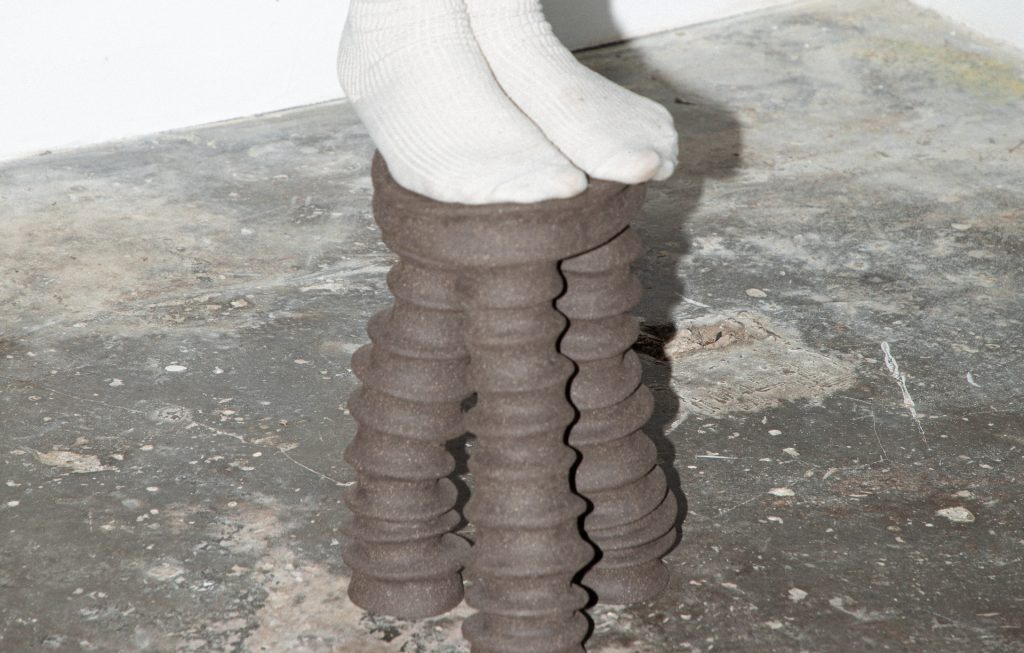

Top Studios of 2024: The Importance of Authenticity
The leading studios of 2024 exemplify the importance of authenticity in collectible design. Their approaches are deeply tied to cultural, personal, and material narratives, reflecting a profound connection between the maker and their work. Authenticity remains an essential factor in this niche, where the distance between the creator and the final piece must remain minimal, ensuring that the designer’s voice is evident in every detail. This closeness fosters a sense of integrity and exclusivity, allowing these studios to push boundaries while preserving the unique character of their creations. Here’s a closer look at six studios that stood out on Adorno in 2024.
Isabel Moncada – Mexico
Isabel Moncada’s lighting designs go beyond functionality to evoke warmth and intimacy, transforming spaces through atmosphere. With over 30 years of experience, Moncada integrates ancient artisan techniques with modern engineering, resulting in lighting fixtures that balance traditional craftsmanship with minimalist elegance. Her creative journey began in Guadalajara’s vibrant art scene in the 1990s, where she collaborated with established sculptors before founding her own studio. Moncada’s work is characterized by an intimate understanding of materials and processes. Each piece reflects her artistic roots, incorporating hand-finished mechanisms and 3D modeling to enhance performance and design. By bridging art, engineering, and craft, Moncada’s lighting pieces achieve a timeless quality that resonates globally while maintaining a deep connection to Mexican heritage.
Stem – India
Stem explores the intersection of India’s rich artisanal heritage and contemporary design. The studio’s work focuses on the tactile potential of materials such as metal and textile, resulting in creations that feel both rustic and modern. Stem emphasizes craftsmanship over mass production, ensuring each piece tells a story of meticulous care and cultural reverence.
Their designs evoke a sense of place, blending India’s diverse craft traditions with minimalist forms that appeal to a global audience. By reinterpreting traditional techniques for modern interiors, Stem highlights the enduring relevance of artisanal processes in an age of rapid industrialization.
Elis Monsport – Czech Republic
Elis Monsport’s work redefines the boundaries of glassmaking, showcasing her mastery of engraving and her deep connection to nature. A graduate of UMPRUM in Prague, Monsport draws inspiration from landscapes, rocks, and textures, translating these natural elements into intricate, one-of-a-kind glass objects.
What sets Monsport apart is her holistic approach—she designs, creates molds, and engraves her pieces entirely herself, ensuring that each work is a singular expression of her vision. Her creations are as much about storytelling as they are about craftsmanship, making them inherently collectible. Monsport’s process is rooted in spontaneity and exploration, often drawing inspiration during her travels in the mountains. Her pieces serve as poetic reflections of her environment, offering a tactile connection to the world around us.
Project 213a – Portugal
Project 213a seamlessly integrates sustainability with timeless design. Their focus on natural materials and innovative production methods creates pieces that feel like a dialogue between tradition and a sense of familiarity. The studio’s approach is both conceptual and pragmatic, addressing environmental challenges while maintaining an aesthetic that is understated yet sophisticated. Their designs often incorporate reclaimed or sustainably sourced materials, reflecting a commitment to reducing environmental impact. By prioritizing ecological integrity without compromising on quality or form, Project 213a embodies the future of conscious design.
Lørdag & Søndag – Mexico
Lørdag & Søndag, founded by Salvador and Enzo Compañ in Mexico City, bridges ancient crafts with modern design, creating pieces that celebrate Mexican cultural heritage. Their work incorporates vibrant colors, bold forms, and traditional techniques, resulting in designs that are both playful and profound.
The studio’s Artefactos collection exemplifies their philosophy, combining indigenous craftsmanship with contemporary aesthetics. By working closely with artisans from diverse communities, Lørdag & Søndag ensure that their creations honor traditional practices while fostering sustainable livelihoods. Their commitment to cultural preservation and collaboration elevates their work beyond mere objects, making it a testament to the enduring value of heritage in modern design.
Melo Clay – United Kingdom
Melo Clay’s sculptural ceramic lamps and vessels are a study in the fluidity of form and the dynamics of raw material. Inspired by the natural distortions caused by gravity, the designer manipulates clay into organic shapes that retain the softness of the material in its finished, stone-like state.
The interplay between form and function is central to Melo Clay’s practice. Each lamp serves as both a decorative object and a functional light source, blending minimalist aesthetics with tactile appeal. The designer’s background in architecture informs her focus on spatial integration, ensuring that her pieces complement their surroundings while standing out as distinctive works of art. Melo Clay’s process emphasizes the beauty of imperfection, drawing parallels between the natural world’s forces and the creative act of making.
These studios that resonated with our audience in 2024 embody authenticity through their deep engagement with materials, traditions, and personal narratives. Whether by reviving ancient techniques or developing entirely new processes, these makers demonstrate that collectible design thrives on proximity to the author’s vision. This authenticity not only ensures the uniqueness of each piece but also fosters a connection between the object and its audience, elevating design into a form of cultural dialogue. As we move forward, the emphasis on authenticity will remain a cornerstone of the collectible design world, bridging the past, present, and future in meaningful ways.
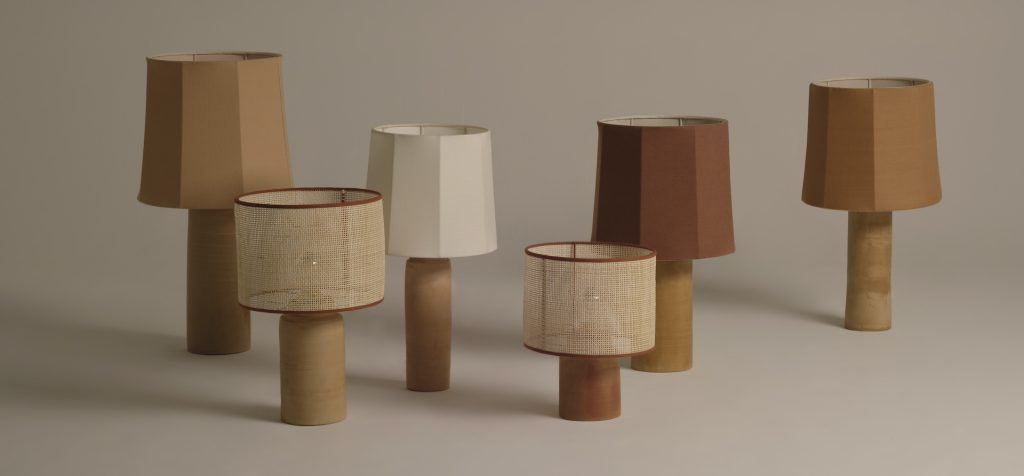

Top Design Scenes: Cultural Context and Connectedness
Design is a reflection of its cultural and geographic context, drawing inspiration from local traditions while contributing to global conversations. In 2024, the most-viewed countries on Adorno illustrated how design serves as a bridge between place and perspective, creating works that resonate universally while staying rooted in their origins. These design scenes demonstrate how locality fosters innovation and the interplay between heritage and modernity shapes contemporary collectible design.
United States:
Diversity Ahead Of The Curve
The U.S. design landscape thrives on contrasts, blending experimental approaches with an appreciation for heritage craftsmanship. Designers across the country are redefining materials and aesthetics to explore new frontiers:
The High Key navigates the intersection of the digital and physical, producing works that challenge our perception of tactile and virtual spaces. Studio Kloak reclaims wood, transforming it into sculptural pieces that embody sustainability and artistic expression. Unown Space and RIA Design Studio delve into cultural recontextualization, weaving historical narratives into contemporary designs that feel both personal and universal. Studio S II leads a darker, more introspective design movement, characterized by mysterious and emotionally resonant forms.
The U.S. design scene’s strength lies in its ability to embrace these diverse narratives, making it a hub for experimentation and bold ideas.
Mexico:
Redefining Heritage Through Contemporary Design
Mexico’s design scene continues to shine as a global leader, blending its rich cultural traditions with forward-thinking expressions. Studios such as Panorammma, Peca, Axoque and Joyful Objects, Yes! exemplify this duality, preserving traditional crafts while adapting them for contemporary audiences. Ayres incorporates the materials and shapes of prehistoric cultures, resulting in pieces that evoke a strong sense of place. Peca reinterprets artisanal techniques with minimalist aesthetics, offering objects that are as practical as they are poetic. Joyful Objects, Yes! brings humor and playfulness to its designs, proving that heritage can be both meaningful and lighthearted. These studios highlight Mexico’s ability to connect past and present, fostering designs that are deeply rooted in identity yet resonate globally. Their work exemplifies the essence of Adorno’s ethos: design that transcends boundaries while maintaining cultural authenticity.
Italy:
Elegance and Evolution
Italy remains at the forefront of design excellence, its legacy of craftsmanship and innovation shaping both national and global trends. Milan’s fairs, particularly Salone del Mobile and Alcova, act as incubators for groundbreaking ideas, blending traditional luxury with experimental aesthetics. Designers like Simone Fanciullacci and Scatter.D collaborate with artisanal workshops, preserving Italy’s artisanal heritage while infusing it with contemporary relevance. Nassi Lamps reimagines the history of lighting design, merging timeless forms with cutting-edge technology. Studios like Federica Zama and Millim Studio push aesthetic boundaries, exploring new forms and materials that redefine Italian design’s signature elegance.
Italian design continues to set the bar for quality and sophistication, demonstrating how tradition and innovation can coexist to produce timeless yet avant-garde creations.
France:
Bold Ornamentation
France’s design scene is steeped in history yet unafraid to embrace bold, modern ideas. Its enduring connection to Art Deco and classic ornamentation provides a foundation for innovative reinterpretations: SashaXSasha, Lucile Gracile and Egle Simkus bring ornamentation into the 21st century, celebrating intricate detail and decorative flair while maintaining a contemporary sensibility. Studios like Soledre and MLK Furniture challenge conventions with daring forms and materials, injecting new vitality into French design.
French designers exemplify effortless sophistication paired with meticulous craftsmanship, proving that boldness and refinement are not mutually exclusive. Their work captures the timeless “French touch,” appealing to both historical and forward-looking audiences.
These countries showcase how design can serve as a dialogue between local contexts and global narratives. The U.S. pushes boundaries through diversity and experimentation, while Mexico redefines heritage with fresh perspectives. Italy anchors itself in artisanal quality and elegance, while France strikes a balance between timeless chic and bold innovation. These designers embody this cultural interplay. Their creations offer a glimpse into how authenticity, tradition, and experimentation converge, positioning collectible design as both a personal and universal language. The global design scenes of 2024 reaffirm that cultural connectedness, underpinned by local narratives, is the future of meaningful design.


Styles That Defined 2024
The design trends of 2024 reflect a fascinating interplay between opposing yet complementary movements, each catering to different sensibilities and aspirations. From the stark honesty of Brutalism to the exuberance of Maximalism, the year’s most desired styles highlight the complexity and diversity of contemporary tastes. These styles underscore not just aesthetic preferences but also societal shifts, offering insights into how design continues to evolve as both a personal expression and a cultural artifact.
Brutalist:
A Return to Raw Honesty
Brutalism, with its focus on raw materials and unpolished finishes, has made a bold resurgence, offering an antidote to the perfection of the digital age. Its honesty and tactile appeal resonate deeply, whether through tropical interpretations that embrace unprocessed woods or industrial minimalist pieces featuring stainless steel and brushed aluminum. Brutalism has proven its versatility, finding its way into interiors of varying styles, from warm, natural spaces to sleek, modern environments. Designers such as Vilius Dringelis have been instrumental in redefining this movement, crafting pieces that balance function and unrefined beauty.
Space Age:
The Optimism of the Future Yet Dwelling in the Past
Space Age design also saw a revival, drawing inspiration from the retrofuturistic optimism of the 1960s and 1970s. Characterized by flowing forms and glossy finishes, this style captures a sense of possibility and wonder, echoing the hopefulness of past visions of the future. The aesthetic was often paired with sepia-like palettes and Pantone’s “Chocolate Mousse,” a rich brown that suggests a grounded yet forward-looking approach to interiors. Designs like Tugce Geyik’s Loop Cabinet epitomized this movement, blending organic yet geometric forms with evocative glass effects, creating objects that feel equally rooted in nostalgia and futurism.
Minimalist:
Simplicity in a Complex World
Minimalism remained a cornerstone of contemporary design, but in 2024, it evolved in intriguing ways. Soft minimalism introduced warmer materials and organic forms, making minimalistic designs feel more approachable and intimate. Mono-material furniture also gained prominence, celebrating the purity and functionality of singular materials like stone, wood, and metal. These new interpretations of minimalism retained the movement’s hallmark simplicity but reimagined it with a tactile and human-centered focus. Makers such as Mock Studio and Luiz Solano excelled in these approaches, offering designs that embody clarity and craftsmanship without sacrificing warmth.
Maximalist:
The Celebration of Excess
Conversely, Maximalism continued its triumphant return, presenting a compelling counterpoint to minimalism’s restraint. This year’s maximalist designs embraced unapologetic ornamentation and fearless color play, creating richly layered and expressive interiors. Vibrant hues and intricate patterns invited designers and audiences alike to explore the emotional depth and individuality that only bold, abundant design can deliver. Designers such as Marco Calhau championed this aesthetic, proving that more can indeed be more when thoughtfully executed.
The coexistence of these styles in 2024 speaks to the fluidity of contemporary design, where contrasting approaches can thrive simultaneously. Brutalism’s raw authenticity, Space Age’s optimistic futurism, Minimalism’s clarity, and Maximalism’s exuberance all reflect the diverse emotional and practical needs of today’s design lovers. Adorno’s curated collections have played a vital role in highlighting these trends, showcasing makers who redefine and expand these movements with ingenuity and depth. As we look ahead to 2025, these styles promise to evolve further, shaping the future of collectible design with their unique perspectives.
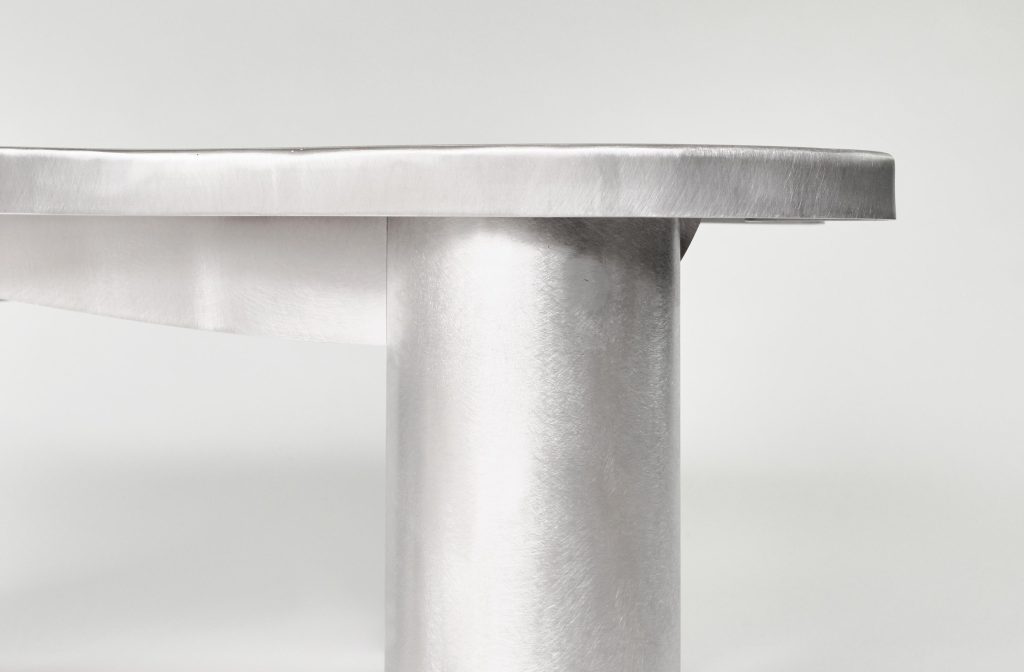

Materials: Same Old But With A Sensory Appeal
While we expected to see more studio-made biomaterials, the materials that defined 2024 reflect a return to fundamentals, emphasizing sustainability, craftsmanship, and sensory connection. This renewed focus on materiality goes beyond aesthetics, highlighting durability, natural beauty, and the tactile experience as central tenets of contemporary design. Makers have embraced these elements not only to create visually compelling pieces but also to engage users on a deeper, more emotional level.
Ceramics
Ceramics remain at the forefront of design, celebrated for their versatility and tactile appeal. From sculptural vases to functional tableware, ceramics exemplify the balance between artistry and utility. Their handcrafted nature offers a connection to the maker, with imperfections and textures that emphasize authenticity. Studios like Streicher Goods have pushed the boundaries of this medium, exploring organic forms that feel both natural and refined.
Wood
Wood continues to hold its place as a timeless material, valued for its warmth, adaptability, and ability to evolve with time. In 2024, designers explored wood’s versatility through both traditional craftsmanship and innovative techniques, from hand-carved furniture to modular, stackable systems. The resurgence of tropical Brutalism further spotlighted wood’s ability to create unprocessed, organic aesthetics like Frederic Imbert’s side table that speak to nature and raw beauty.
Textiles
Textiles have seen a resurgence of innovation, with designers integrating them into furniture and lighting to add texture and softness. This year, textiles became more than accents—they were central to design narratives, often serving as the focal point of a piece. Techniques such as weaving and quilting brought depth and tactility to contemporary interiors, such as Mariadela’s Fluid Vase offering a sense of handmade artistry while experimenting with bold patterns and intuitive forms.
Metals
Metals, particularly stainless steel and brushed aluminum, brought a sleek, industrial edge to collectible design in 2024. These materials were often juxtaposed with softer, more tactile counterparts, creating striking contrasts that emphasized balance and harmony. Metal’s durability and reflective qualities made it a favorite for minimalist and Space Age-inspired designs, as seen in pieces like Paul Coenen’s Camber Series. Makers have also explored metal’s textural possibilities, embracing oxidation and patina to add depth and uniqueness to their creations.
This year’s material trends underscore the importance of thoughtful material choices in creating designs that are not only visually appealing but also sustainable and emotionally resonant. By reconnecting with the intrinsic qualities of materials, designers are crafting objects that celebrate their origins and invite users to engage with them in meaningful ways. As we look toward the future, these principles are likely to remain at the core of collectible design, pushing the boundaries of sustainability and sensory engagement.


Top Categories: Everyday Objects Elevated
The most sought-after categories of 2024 reveal a deep appreciation for the artistry hidden in the everyday. These objects, though often considered mundane, have emerged as powerful mediums for creative expression. By infusing beauty and intention into functional designs, makers have elevated these items into collectible pieces that shape how we experience our spaces, proving that even the simplest forms can hold profound impact.
Vases
Vases continued to captivate as versatile canvases for artistic exploration. Whether as bold sculptural statements or understated classics, vases transcends functionality to become focal points within a room. Their adaptability allows designers to experiment with form, material, and texture, creating objects that range from organic and fluid to geometric and precise. Makers like Federica Paglia have pushed the boundaries of what a vase can be, using ceramics, metals, and even textile thread to craft pieces that seamlessly blend art and utility.
Table lamps
Table lamps reaffirmed their role as indispensable design elements in 2024. Beyond their functional purpose, table lamps contribute ambiance, shaping the mood of a space with their interplay of light and shadow. This year saw a resurgence in lamps that double as sculptural forms, where the base and shade work in harmony to create striking visual compositions. The use of innovative materials like natural fibers and ceramics as seen in Andrei Clontea’s Cetus Lamp further expanded the possibilities, resulting in pieces that feel both modern and timeless.
Wall lamps
Wall lamps emerged as space-saving solutions that bridge the gap between practicality and wall art. Designers have embraced their potential to become integral design features, crafting pieces that enhance architectural elements or serve as standalone works of art. The minimalist trends of 2024 inspired pared-down silhouettes with raw metals like Stem’s Scape Wall Light, while other maximalist approaches introduced bold shapes and vibrant colors like BalzerBalzer’s Bubble Lights.
Side tables
Side tables, often underappreciated, have been reimagined as essential components of contemporary interiors. Once relegated to the background, they are now celebrated for their ability to enhance a room with subtle yet impactful design details. Makers have experimented with shapes, materials, and construction techniques to produce side tables that are as versatile as they are captivating. As seen in Lørdag Søndag’s Pupa Side Table, these pieces offer a perfect opportunity to blend of utility and sculptural finesse to a space.
The popularity of these categories in 2024 underscores a broader trend: a growing recognition of the value of elevating everyday objects. By rethinking the role of these items in our homes, designers have transformed them into more than just functional necessities—they are now central to how we engage with and personalize our spaces. As we move forward, these categories will continue to inspire, challenging us to see beauty and potential in even the most unassuming forms.
Looking Ahead to 2025
As we bid farewell to 2024, we reflect on a year that celebrated the artistry, innovation, and cultural narratives shaping collectible design. From the materials that grounded us in sustainability and sensory connection, to the styles that mirrored the duality of modern tastes, to the extraordinary makers who bridged tradition and contemporary expression—this year has been a testament to the power of design to elevate the everyday.
Looking ahead, 2025 promises to bring even greater discoveries. We’re excited to continue this journey, uncovering the bold, the unexpected, and the extraordinary. With your support, we will keep championing independent makers and their ability to preserve culture, tell stories, and inspire through their work. Thank you for being part of this vibrant community that celebrates design not just as objects, but as expressions of meaning, heritage, and creativity.
Here’s to a new year of discovery, inspiration, and connection. Follow us into 2025 as we explore the next chapter of collectible design.


